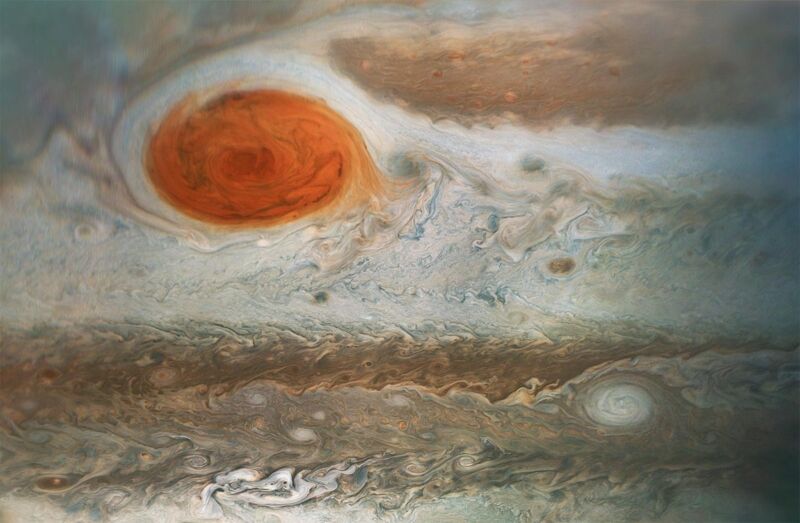Astronomers think they’ve figured out how and when Jupiter’s Red Spot formed

Enlarge / Enhanced Juno image of Jupiter’s Great Red Spot in 2018. It is likely not the same one observed by Cassini in the 1600s. (credit: Gerald Eichstadt and Sean Doran/CC BY-NC-SA)
The planet Jupiter is particularly known for its so-called Great Red Spot, a swirling vortex in the gas giant’s atmosphere that has been around since at least 1831. But how it formed and how old it is remain matters of debate. Astronomers in the 1600s, including Giovanni Cassini, also reported a similar spot in their observations of Jupiter that they dubbed the “Permanent Spot.” This prompted scientists to question whether the spot Cassini observed is the same one we see today. We now have an answer to that question: The spots are not the same, according to a new paper published in the journal Geophysical Research Letters.
“From the measurements of sizes and movements, we deduced that it is highly unlikely that the current Great Red Spot was the ‘Permanent Spot’ observed by Cassini,” said co-author Agustín Sánchez-Lavega of the University of the Basque Country in Bilbao, Spain. “The ‘Permanent Spot’ probably disappeared sometime between the mid-18th and 19th centuries, in which case we can now say that the longevity of the Red Spot exceeds 190 years.”
The planet Jupiter was known to Babylonian astronomers in the 7th and 8th centuries BCE, as well as to ancient Chinese astronomers; the latter’s observations would eventually give birth to the Chinese zodiac in the 4th century BCE, with its 12-year cycle based on the gas giant’s orbit around the Sun. In 1610, aided by the emergence of telescopes, Galileo Galilei famously observed Jupiter’s four largest moons, thereby bolstering the Copernican heliocentric model of the solar system.



